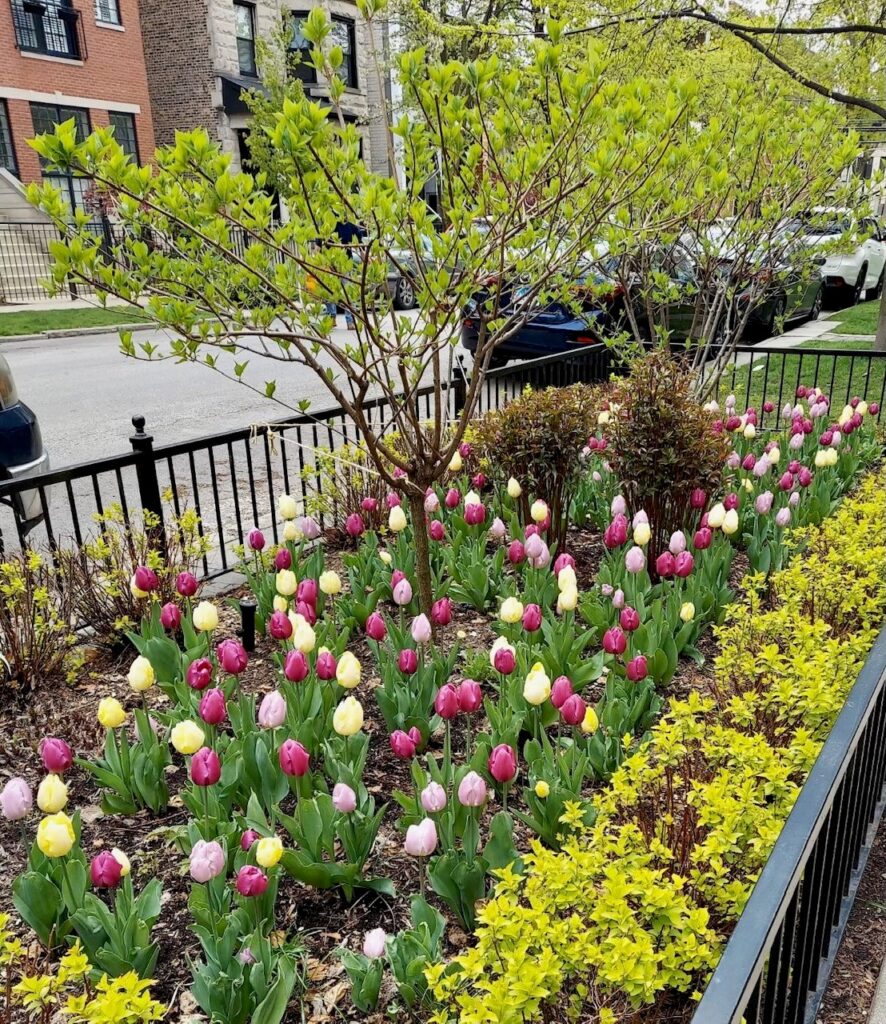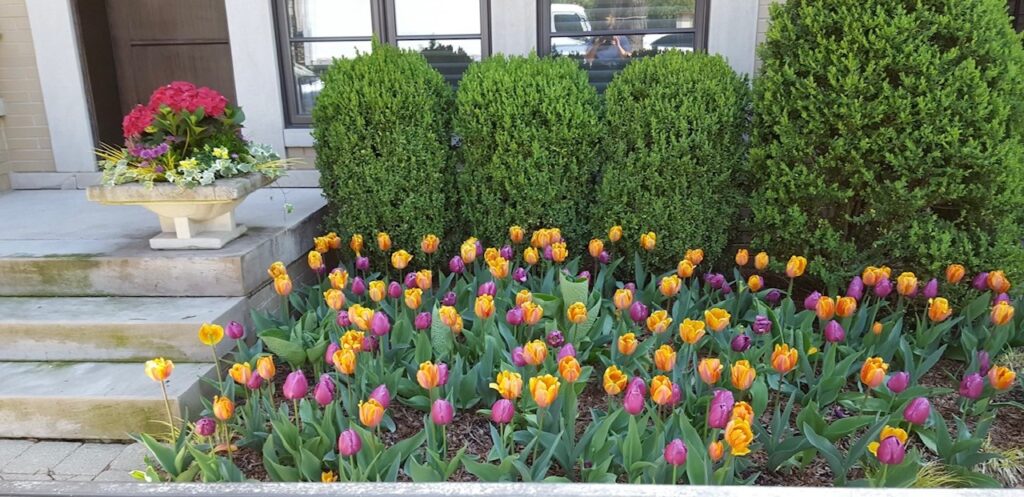By Anne Moore
More than 300 tulips popped in our front garden and parkway this spring. It was a joyous burst of color after a grey winter. The tulips were so many and so pretty that compliments came from neighbors, churchgoers, delivery people, pedestrians. We heard children learn their colors, saw “influencers” pose. An Uber driver asked, “Is that the address, the house with the beautiful tulips?”
The tulip fields are the work of Mary Gignilliat, owner of Gardens that Grow, begun in 2008. She uses “Single Early” tulips because they bloom the longest, from early April through May, depending on the weather. Tulips don’t like heat, she explains. They last longer in a cool spring.
Gignilliat studied horticulture and design at Chicago Botanic Garden. For six years, she worked in the perennial department at Gethsemane Garden Center, where she gained her expertise in urban gardening.
To me, her tulip groupings are like an art installation. They’re site specific and ephemeral. Bulbs are planted in fall, bloom in spring, and removed early summer. Blink, and they’re gone. (Bulbs are recycled.)
For city gardens, Gignilliat treats tulips like annuals, because in her experience they don’t flower reliably year two. Tulip leaves need lots of sun to generate the fuel to produce the next season’s flowers. There’s just not enough sun in the city, she says.

Gignilliat employs two full-time and two part-time seasonal workers. She’s known for her lush urban landscapes, container gardens, and outdoor holiday decor.
“Designing the tulip displays in one of my favorite yearly tasks,” Gignilliat says. “I spend hours finding the right color combinations for each client. It’s like putting together a puzzle. I love it. I put as many as five colors in each mix, depending on my client’s taste.”
The key to each installation is quantity, she notes. (Picture the thick tulip beds on Michigan Avenue: each holds at least 1,000 bulbs.) The more you plant, she says, the greater the impact. Last fall, she planted more than 6,000 bulbs for 14 clients.
Gignilliat is picky about sourcing. She buys from a wholesaler in Connecticut and orders in August, when inventory is good. Bulbs arrive late October or early November and go straight into the ground. It’s a singular passion. “For a spring display, we exclusively plant tulips.”





